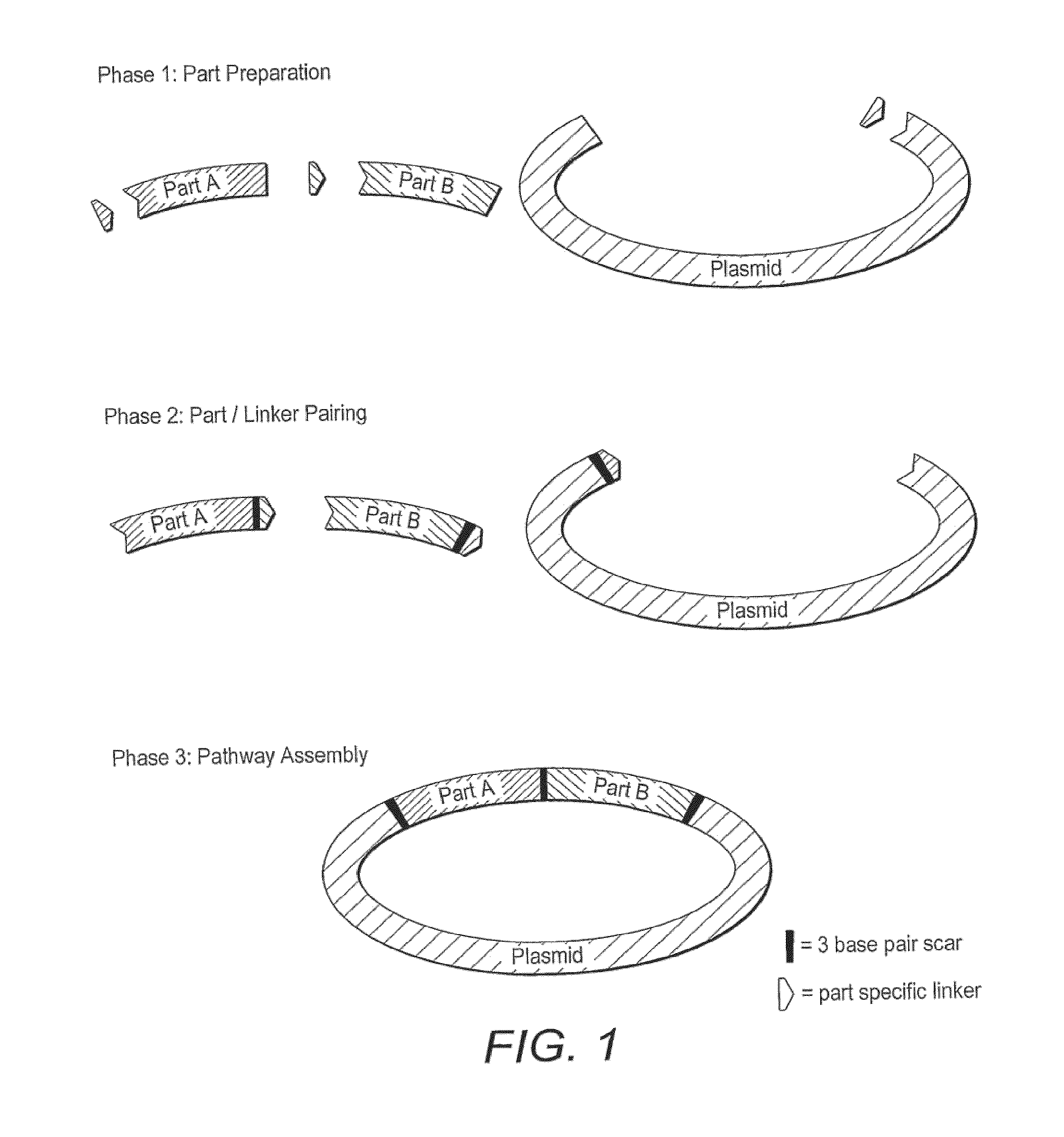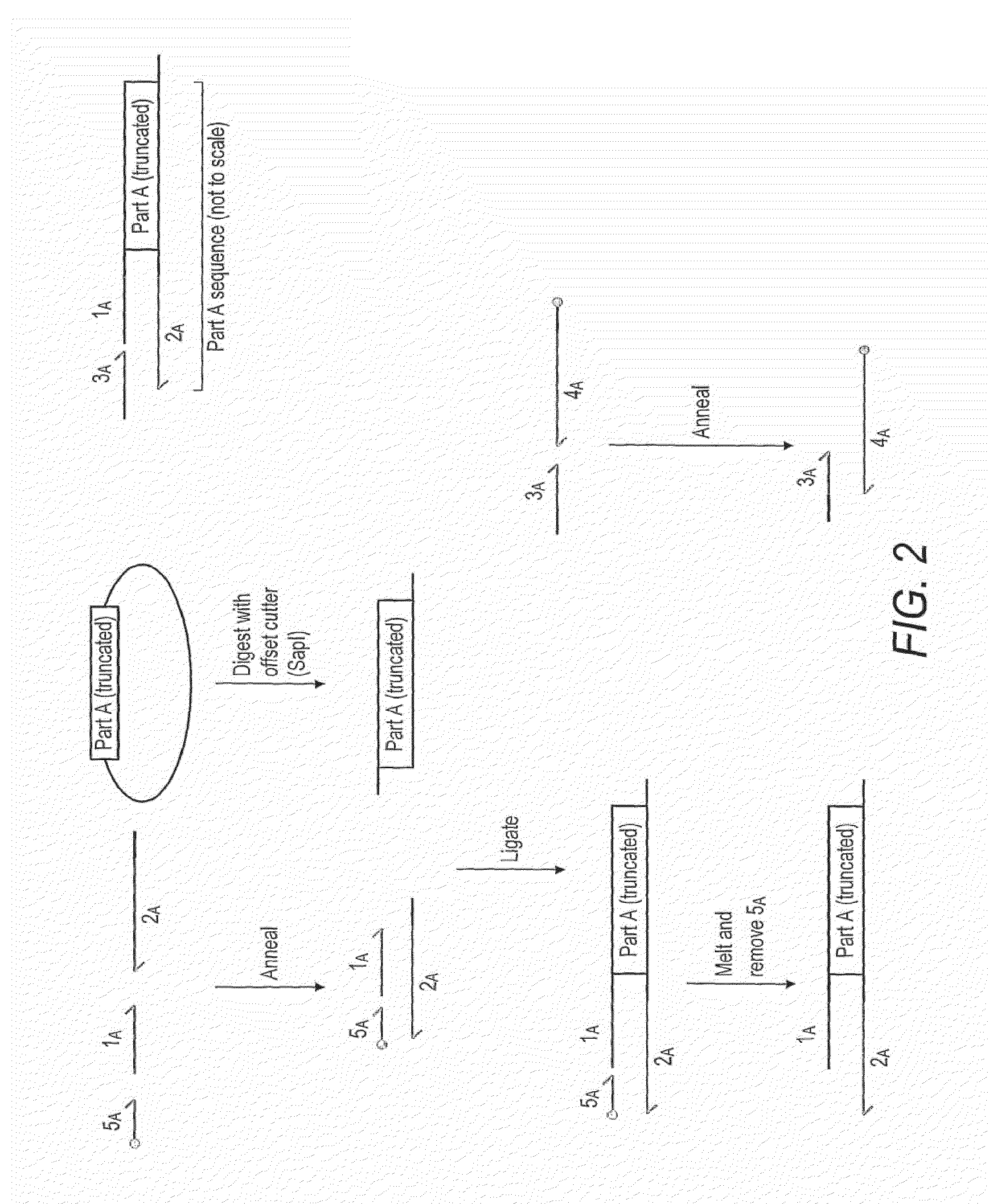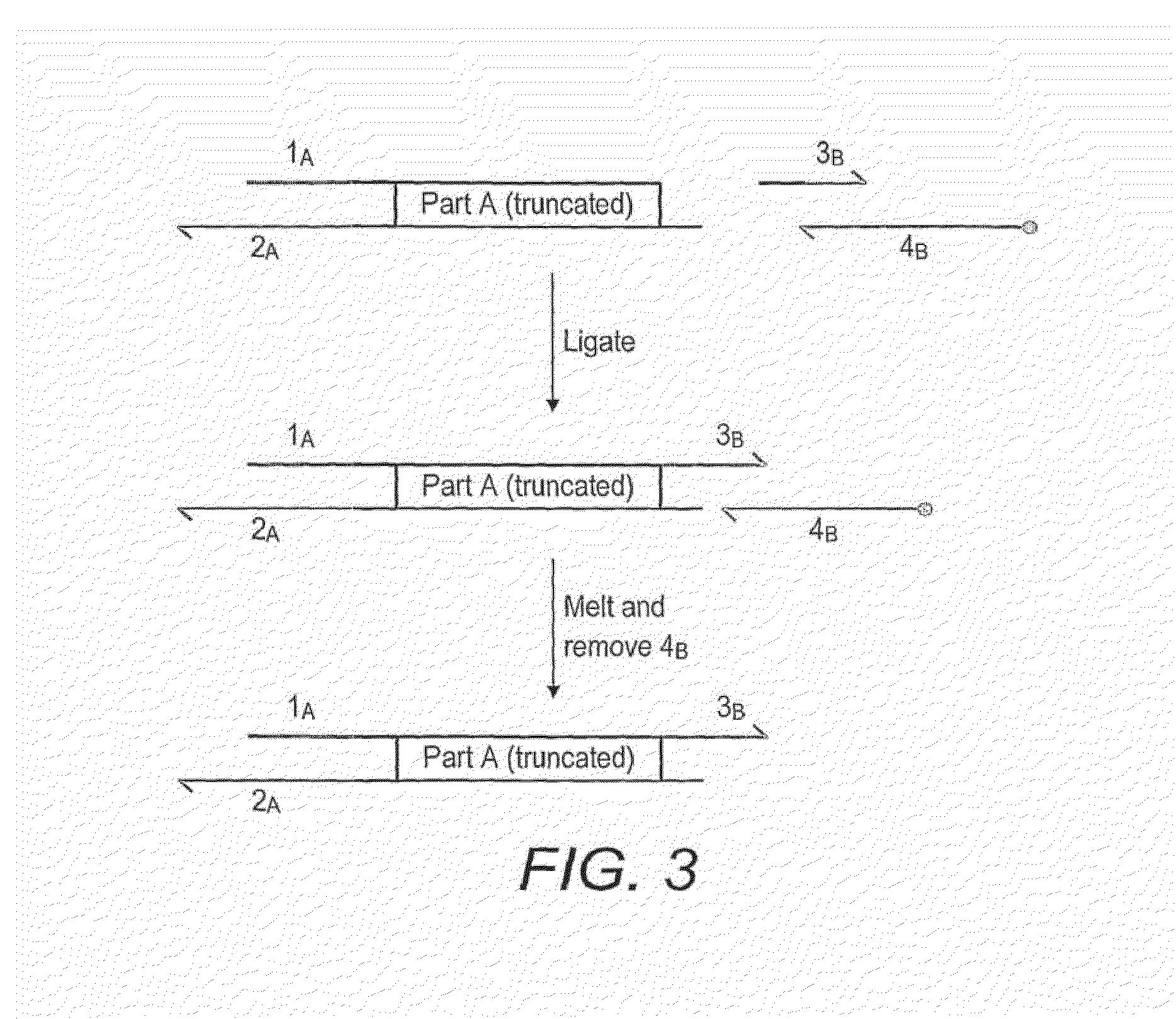Method for assembly of polynucleic acid sequences
a polynucleic acid sequence and assembly technology, applied in chemical libraries, combinational chemistry, enzymes, etc., can solve the problems of impracticality and approach, and achieve the effect of quick and simple assembly, convenient use and quick and simple assembly
- Summary
- Abstract
- Description
- Claims
- Application Information
AI Technical Summary
Benefits of technology
Problems solved by technology
Method used
Image
Examples
example 1
Red and Blue Colony DNA Assembly Assays
Assay Description
[0238]Two assays were developed that use the same experimental protocol but different sets of input parts (nucleic acids) and oligos (linkers) for the DNA assembly reactions. The first assay generates blue colonies as a result of successful DNA assembly due to the expression of lacZa as a reporter protein and the second assay generates red colonies due to the expression of mRFP1.
[0239]A correct DNA assembly reaction will insert a ribosome binding site (RBS) between the transcriptional promoter (R0040 or R0010) and the reporter protein (lacZa or mRFP1). Proper insertion of this RBS results in a complete operon for expression of the reporter protein, resulting in a phenotypic change. Incorrect assemblies will leave the colonies colourless. This assay was demonstrated by determining the efficiency of a 1 part assembly using the parts and oligos shown in FIG. 9 and listed in Table 1. Coloured and colourless colonies were sequence v...
example 2
Two, Three and Four Part DNA Assemblies
DNA Assembly Description
[0259]Multiple 2-part, 3-part and 4-part assemblies (polynucleic acid sequences) were assembled from a set of nine initial component parts (nucleic acid sequences). The assemblies were verified by visual screening (reporters) as well as antibiotic selection (vector backbones and antibiotic resistance parts). They were further verified by colony PCR reactions using oligos within the assembled parts. The assemblies were then finally confirmed by direct sequencing of the entire construct.
[0260]The assembly method was varied in two ways:[0261](1) Different methods of purification were used following the part-linker assembly step—DNA purification spin columns and gel extraction.[0262](2) Two different enzymes were used to digest the parts before the part assembly stage—EarI (Type IIS restriction enzyme) or EcoRI-SpeI (pair of traditional restriction enzymes used for BioBrick™ assembly).
[0263]Correct assemblies were produced u...
PUM
| Property | Measurement | Unit |
|---|---|---|
| temperature | aaaaa | aaaaa |
| volume | aaaaa | aaaaa |
| volume | aaaaa | aaaaa |
Abstract
Description
Claims
Application Information
 Login to View More
Login to View More - R&D
- Intellectual Property
- Life Sciences
- Materials
- Tech Scout
- Unparalleled Data Quality
- Higher Quality Content
- 60% Fewer Hallucinations
Browse by: Latest US Patents, China's latest patents, Technical Efficacy Thesaurus, Application Domain, Technology Topic, Popular Technical Reports.
© 2025 PatSnap. All rights reserved.Legal|Privacy policy|Modern Slavery Act Transparency Statement|Sitemap|About US| Contact US: help@patsnap.com



